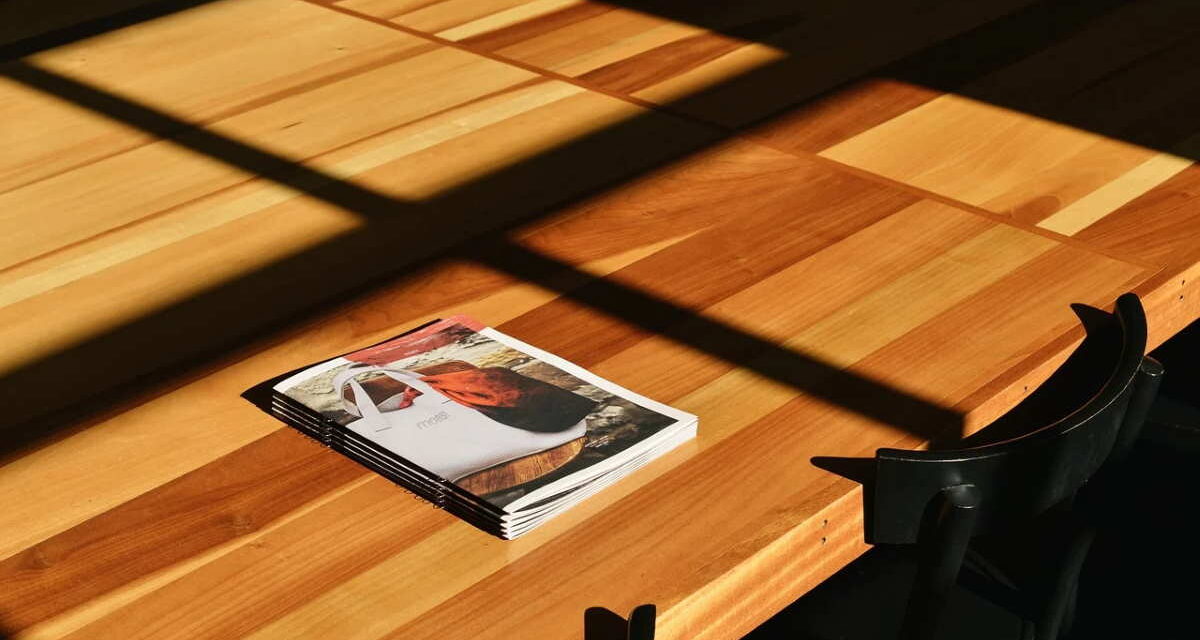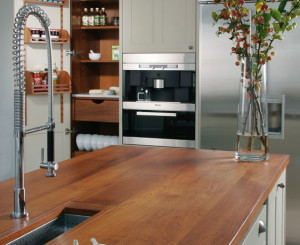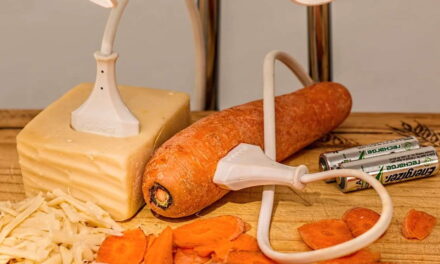Do you know how to make your wooden worktops last a lifetime? Having spent the time carefully designing and planning your new kitchen, it’s natural that you’ll want to keep it looking its best! If you’ve chosen wood in your kitchen, either as beautiful wooden flooring or as a stunning wooden worktop, this will take some maintening.
Countertop maintenance always starts with oiling. Even before the surface is put in place, you should oil all the sides twice or even three times. End grain sections (where oil will be most readily soaked up) should be oiled twice as much again.
The reason for all this elbow grease is that oil represents a natural defence for all wooden work surfaces. The oil keeps the fibres contained in timber supple, and better able to deal with moisture. In turn this means that your worktop will have less of a tendency to bend and will ultimately last a lot longer (if you’ve opted for a high quality full stave worktop you’ll want it to last a lifetime).
Choosing an Oil for your Wooden Worktop
There are quite a number of types and brands when it comes to oils for wooden worktops and other wooden products. Some are specific to certain types of timbers while others are designed to have a wider number of uses. We’ve detailed a number of the most popular, but your manufacturer may have recommended one to you which is not listed here.
- Danish Oil: Manufactured from a mix of oils, most commonly Tung and Linseed. Danish oil will provide good protection and is fairly quick to apply. Rustin’s Danish Oil is a well-known and trusted brand.
- Tung Oil: Generally sourced from trees in China, Africa, and South America. Tung gives good protection but might stay wet longer and is sometimes harder to apply. Bestwood Tung oil and Liberon Tung oil can be located in most hardware stores.
- Linseed Oil: Made from flax seeds which are steamed and crushed. You’ll get fair protection but expect a drying time of about 48 hours. Rustin’s make a good linseed oil.
- Teak Oil: Sometimes thought to be made of teak, but it’s actually a blend of vegetable oils (however, it was commonly used to oil teak). It’s quick drying and you will get a good level of protection in most environments.
How and When to Oil your Wooden Worktop
Having taken delivery of the worktop, the first priority is to store it somewhere that is up to living temperature. If you have a small kitchen then keep it in another heated room. Keep the worktop in its packaging and store it flat. If you’ve got multiple worktops then they can be stored on top of each other but they must be separated by using bearers between them.
A few days before installation oil all the sides, especially the bottom, which will be difficult (or impossible) to get at after the countertop has been installed. No matter how good your oiling regimen, you should allow for a little movement using slotted brackets or oversized screw holes with washers. If you simply screw your top down tightly, you may find that the wood splits.
After installation the top will need to be settled into its new home with more oiling. Once a day is ideal for the first week and you can make this easier on yourself by doing it last thing at night. This way, in the morning, the surface will have absorbed the oil and be ready to use.
Once your top was seen a week of use, you can back off on the oiling for a little while. As the top reaches six months old you may need to oil it again, and then about every six months from then on. A reasonable test is to see how water beads when dropped onto the surface; if it doesn’t bead then a re-oil may be a good idea.
How Different Types of Wooden Worktop React to Oils
You may have chosen a long single stave run of worktop with very few joins, or you might simply have an inset end grain butchers block and hundreds of separate pieces of wood. The number of joins in your worktop should not affect how much you oil it. If you have end grain surfaces then you should use a little more oil, since it will be absorbed at a greater rate. No matter what your surface, make oiling part of your housekeeping checklist, and your beautiful hardwood wooden worktop will look sensational for its entire life.
About the Author: Jon Buck is managing director at Bordercraft, a family owned business that has been producing fine hardwood furniture from their workshops in the Welsh borders since 1972. All of the timbers they use are sourced from sustainable managed forests, and everything they sell is made by their experienced craftsmen in the UK. You can connect with Bordercraft on Facebook.
If you benefited from Wooden Worktops: Make Them Last, please share it on your social networking sites. Thank you.






